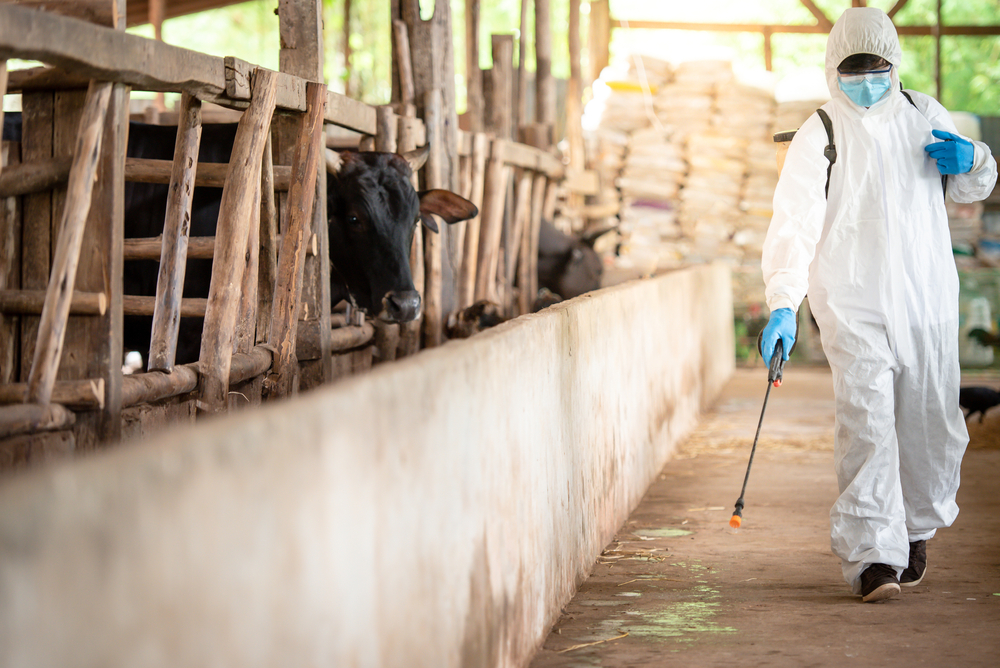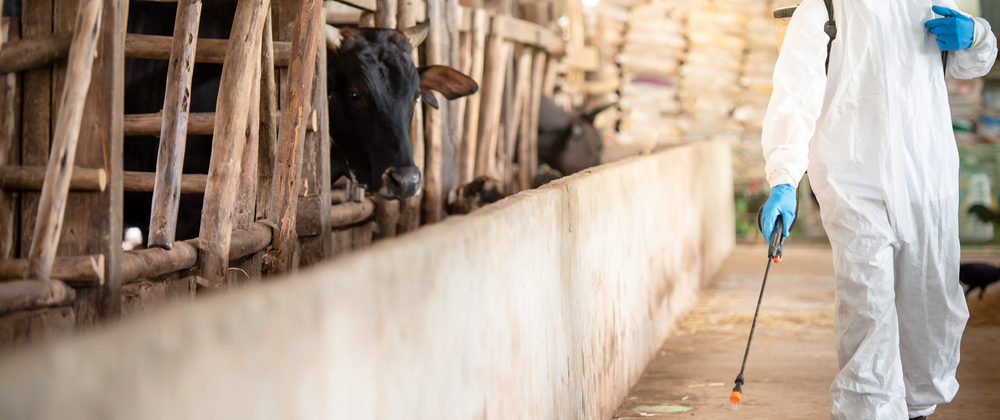Bartonella and Brucella are close cousins in the taxonomy that describes the relationships between all life. These bacteria developed out of a common ancestor. The extent of similarity in their genomes suggests that their division occurred relatively recently. They are both intracellular pathogens (i.e., they live inside the cells in their hosts) and can manipulate the host cell and evade immune response in similar ways. Consequently, they both have a wide variety of possible disease presentations from mild to severe illness and the potential for chronic infections that may occur with or without clinical symptoms.
These overlapping characteristics, along with their similar-sounding names, often make it difficult to keep them separate when patients and providers are researching zoonotic pathogens.
Zoonotic Pathogens
Both bacteria are considered zoonotic, or transmissible between animals and people. Although there are preferred host species with which they likely evolved, Bartonella and Brucella species are found in a variety of animal hosts. Only one species out of both genera, Bartonella bacilliformis, has been documented only in humans because a preferred animal host (known as a “reservoir”) has not been determined.
Their ability to survive in non-reservoir hosts means that these bacteria are able to maintain their populations in animal reservoirs and cause illness in human hosts when transmission occurs. A major distinction between these relatives is that Bartonella species typically require a vector (most commonly a flea, tick, louse or biting fly) to gain access to a new host, whereas Brucella species do not.
For example, Bartonella henselae was discovered around 1990 in North America. It is the causative agent of cat scratch disease and is primarily associated with cats. Although there is case report evidence of direct transmission from cat bites, current research suggests that transmission is more likely when fleas, ticks and lice are present. In fact, viable bacteria can be found in flea dirt (feces or poop) for up to 8 days following excretion.
In contrast, Brucella canis is primarily associated with dogs. These bacteria can be transmitted to humans through direct mucosal contact with infected bodily fluids. The highest concentration of viable bacteria is found in vaginal discharge, semen, and placenta, but studies show that urine, feces, saliva, and blood are all potentially infective as well. Brucella canis, along with other Brucella species, can also become airborne and infect people via inhalation of live bacteria.
Brucella abortus is primary associated with cattle, sheep and pigs. These bacteria can be transmitted through direct mucosal contact with infected bodily fluids by animal care workers, slaughterhouse workers and people who consume unpasteurized milk products. The developments of a vaccine for cattle and pasteurization have greatly reduced the number of infections in people in regions that have the infrastructure to take advantage of these technologies.
Scientific History
Both bacteria genera have been rediscovered several times in history, identified by their symptoms. Between the early 1900s and the 1990s, scientists gradually realized that the same bacterial families were causing various diseases. However, it wasn’t until 2006 that scientists finally settled on the division of species into Brucella and the more recently discovered genus Bartonella, of which species are still being identified today.
Find out more about the history of human Bartonella identification.
The disease caused by infection with Brucella species is called brucellosis, and the disease caused by infection with Bartonella species is called bartonellosis. Both species can cause recurring fever, arthritis and neurological symptoms as well as endocarditis (swelling around the heart). Both species can cause bone infections (osteomyelitis), with a signature pattern typical for Brucella. This signature bone infection makes it possible to make a presumptive diagnosis of brucellosis in Neanderthal and human remains going back to around three million years ago.
Surveys of fever around the world turn up Brucella along with the other usual suspects, including Bartonella. Even when the expectation is that most fever comes from a similar outbreak of disease such as Dengue virus, these additional pathogens are often found.
Brucellosis and bartonellosis are both occupational risks for animal care workers. Worldwide, brucellosis is one of the most common zoonotic infections, with about half a million cases per year. In the United States, brucellosis is the most common infection acquired by laboratory workers. Within the last decade in China, there have been large outbreaks among animal researchers, as well as a large community exposure when a production facility without adequate sanitary procedures spewed the bacteria into the air.

The fact that Brucella can be acquired by breathing it in makes it a better candidate for a bioweapon than Bartonella. Consequently, there has been more funding available for a vaccine.
Conclusion
Comparing these pathogens can help identify genetic differences that lead to significant differences in the host response. For example, Bartonella shares a change to its flagella (whip tail) with another recently discovered pathogen Helicobacter pylori (bacteria discovered in 1982 that cause certain gastric diseases) but not with Brucella. This change helps it evade identification by the host immune system. By studying these differences, it is possible both to learn more about how these species function at the cellular level and to identify potential diagnostic or treatment strategies.
Because of its impact on agriculture and agricultural products and its potential as a bioweapon, Brucella has received some research funding that isn’t available to Bartonella researchers. Nonetheless, Bartonella researchers have benefited from Brucella research findings. Consequently, scientific developments related to Brucella are important to anyone with an interest in Bartonella.
References
Ben-Tekaya, H. et al. (2013). Bartonella and Brucella – Weapons and strategies for stealth attack. Cold Spring Harbor Perspectives in Medicine, 3(8), a010231. 10.1101/cshperspect.a010231 https://www.ncbi.nlm.nih.gov/pmc/articles/PMC3721268/
Saenz, H. L. et al. (2007). Genomic analysis of Bartonella identifies type IV secretion systems as host adaptability factors. Nature Genetics, 39(12), 1469-1476. 10.1038/ng.2007.38 https://pubmed.ncbi.nlm.nih.gov/18037886/
Ali, M. A. et al. (2020). Etiologic agents of fever of unknown origin among patients attending Mnazi Mmoja Hospital, Zanzibar. Journal of Community Health, 45(5), 1073-1080. 10.1007/s10900-020-00832 https://www.ncbi.nlm.nih.gov/pubmed/32399732
Cyranoski, D. (2019, 17 December). Chinese institutes investigate pathogen outbreaks in lab workers. Nature. Available at: https://www.nature.com/articles/d41586-019-03863-z
Yeung, J., & Cheung, E. (2020, September 17). Bacterial outbreak infects thousands after factory leak in China. CNN.com. Available at: https://www.cnn.com/2020/09/17/asia/china-brucellosis-outbreak-intl-hnk/index.html
Moreno, E. (2020). The one hundred year journey of the genus Brucella (Mayer and Shaw 1920) [online ahead of print]. FEMS Microbiology Review, fuaa045. 10.1093/femsre/fuaa045 https://pubmed.ncbi.nlm.nih.gov/33016322/
Kazmierczak, J. (2012). Public health implications of Brucella canis infections in humans. Available at: http://www.nasphv.org/Documents/BrucellaCanisInHumans.pdf
Centers for Disease Control and Prevention. (2012). Brucellosis. Available at: https://www.cdc.gov/brucellosis/clinicians/brucella-species.html
D’Anastasio, R. et al. (2010). Origin, evolution and paleoepidemiology of brucellosis. Epidemiology & Infection, 139(1), 149–156. https://doi.org/10.1017/S095026881000097X https://www.cambridge.org/core/journals/epidemiology-and-infection/article/origin-evolution-and-paleoepidemiology-of-brucellosis/9F0C4977F7154BBD0F516A3AE439BDB6
Rothschild, B., & Haeusler, M. (2021). Possible vertebral brucellosis infection in a Neanderthal. Scientific Reports, 11, Article 19846. https://doi.org/10.1038/s41598-021-99289-7 https://www.nature.com/articles/s41598-021-99289-7


